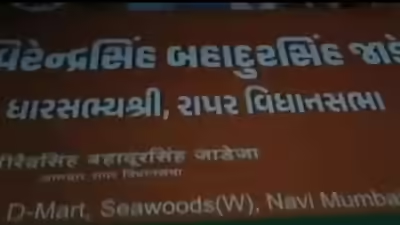After Mumbai Local Train Tragedy, CM Fadnavis Promises More AC Locals and Boost in Peak Hour Capacity
Introduction: A Tragedy That Triggered a Promise
Mumbai’s bustling local train network, often referred to as the city’s lifeline, witnessed another heartbreaking incident recently—a tragic reminder of the daily dangers commuters face due to overcrowding and aging infrastructure. In response, Maharashtra Deputy Chief Minister Devendra Fadnavis addressed public concerns and made key promises aimed at transforming the suburban rail experience.
From introducing more air-conditioned (AC) local trains to enhancing peak-hour carrying capacity, the government aims to prevent future tragedies and build a safer, more efficient public transport system. But can promises translate into lasting change?
The Tragedy: Overcrowding Claims Lives Once Again
The tragedy occurred during peak travel hours, when the city’s trains are packed beyond capacity—sometimes with passengers hanging out of doors or riding on rooftops. In this case, the overloaded compartments led to a fatal accident, raising urgent questions about railway safety, passenger management, and the adequacy of infrastructure in India’s financial capital.
Despite being the backbone of urban mobility, Mumbai’s suburban train network continues to struggle under the weight of its own success—serving over 80 lakh commuters daily while battling severe overcrowding, delayed upgrades, and poor last-mile connectivity.
CM Devendra Fadnavis Responds with Reform Pledges
In the wake of this tragic incident, Deputy CM Devendra Fadnavis addressed the media and made a public promise to:
- Add more AC local trains to the network
- Enhance carrying capacity during peak hours
- Improve the overall infrastructure and safety protocols of Mumbai’s local train system
He acknowledged the systemic gaps and emphasized the need for fast-track reforms to match Mumbai’s rapid urbanization and population growth.
Why More AC Locals Matter
The introduction of AC local trains is not merely a luxury—it is a necessary step toward modern, high-capacity transit. These trains:
- Reduce crowding due to fixed seating and automatic doors
- Offer better ventilation and temperature control, especially in Mumbai’s humid climate
- Improve boarding discipline, reducing on-platform chaos
- Have been proven to reduce instances of footboard travel and fatal falls
Fadnavis also hinted at affordable pricing models to encourage wider adoption of AC locals across all income groups.
Boosting Peak Hour Capacity: A Long-Overdue Move
Most Mumbai train fatalities occur during rush hours, when thousands scramble to board already-packed compartments. Fadnavis’ proposal to boost capacity includes:
- Increasing train frequency during peak times
- Deploying longer rakes (e.g., 15-coach trains instead of 12)
- Dedicated platforms and signal upgrades to support faster turnaround
If implemented effectively, this would alleviate pressure on the system, reduce human congestion, and drastically improve passenger safety.
Ground Realities: Challenges Ahead
While the announcement is welcome, implementing these changes won’t be easy. Key challenges include:
- Infrastructure limitations at stations, especially older ones
- Power and maintenance needs for AC coaches
- Coordination between the Maharashtra government, Indian Railways, and BMC
- Budget constraints and delays in tender processes
Moreover, improving capacity without proper crowd management and last-mile connectivity will offer only partial relief.
Public Reactions: Hope Mixed with Skepticism
Mumbai’s commuter base has long learned to take political promises with caution. Many travelers expressed hope that Fadnavis’ announcement marks the beginning of long-term reform, while others pointed out that similar promises were made after previous accidents, with only slow, incremental progress.
Social media reactions were mixed—while some users welcomed the expansion of AC services, others urged for urgent repairs to foot overbridges, better station lighting, and more CCTV surveillance.
A Larger Urban Mobility Problem
The tragedy and the resulting policy announcements spotlight a broader issue: India’s urban transport systems are buckling under pressure. As cities grow, their infrastructure is not keeping pace. From overcrowded buses to jammed roads and underfunded railways, urban mobility is in crisis.
Experts suggest that the solution isn’t just more trains—it’s an integrated urban transport plan that includes:
- Metro rail expansion
- Feeder buses and auto-rickshaw integration
- Smart ticketing systems
- Real-time crowd management and AI-powered dispatch
Conclusion: From Tragedy to Transformation?
The Mumbai local train tragedy was a painful reminder of the urgent need for transport reform in India’s most dynamic city. CM Devendra Fadnavis’ pledge to introduce more AC locals and increase peak-hour capacity is a step in the right direction—but much will depend on how swiftly and effectively these promises are implemented.
As Mumbai continues to expand vertically and economically, it must do the same with its infrastructure—making safety, speed, and scalability the cornerstones of its transport vision.
For now, commuters and citizens will be watching closely—not just for words, but for action on the ground.
Also Read : 7 Bold Words: Jaishankar Slams Pakistan Over Osama bin Laden and Terror Links








